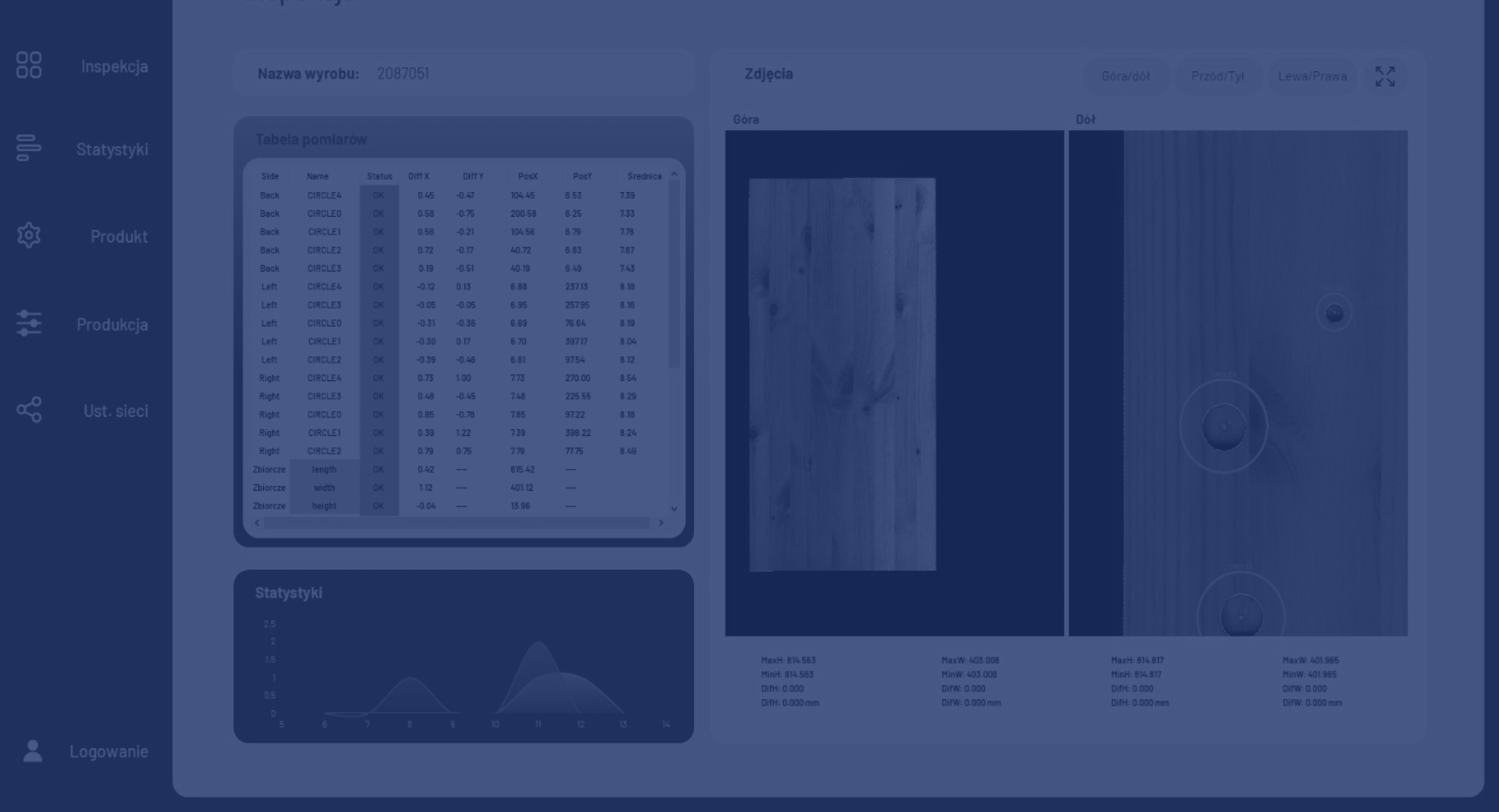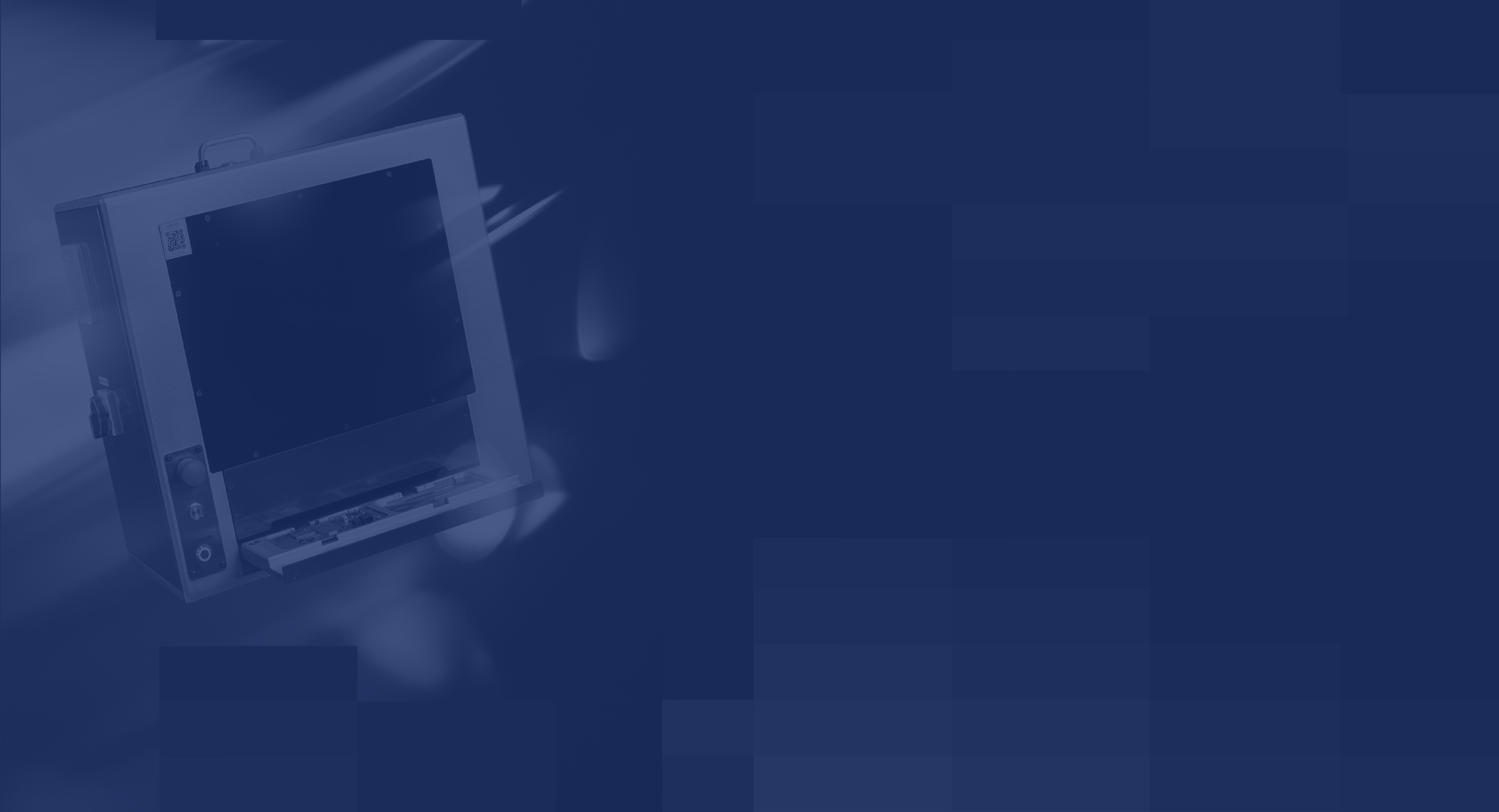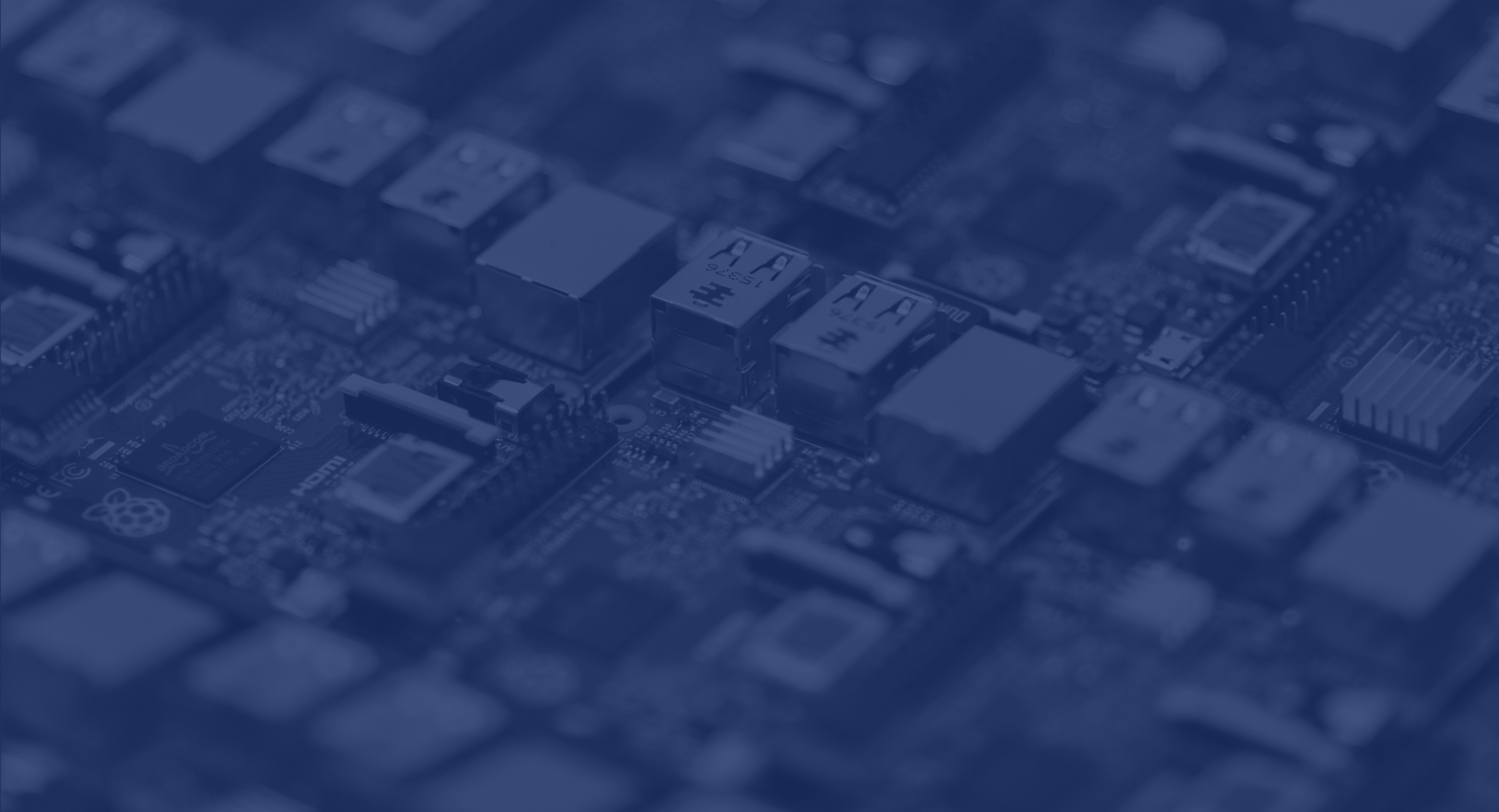
Screens in our vision systems
Vision systems
Vision systems are used in the automotive, electronics, wood, furniture, pharmaceutical, food and many other manufacturing industries, where they enable automatic quality control, process optimization, improvement of work safety and the collection of data necessary for analysis and improvement of production.
.jpeg)
The basis of the video system is the image analysis algorithm, but it is the user interface that determines whether the operator will be able to take full advantage of its capabilities. Designing such screens is a challenge — on the one hand, they must be simple and transparent, and on the other hand, they must handle complex processes and communicate with many external systems.
Integration with other components and adaptability
Our Interface as part of a larger system can communicate with various components. He often acts as an intermediary, directing the process. By communicating with databases, MES systems and other computer units, you can expand the capabilities of the system as much as possible depending on the requirements.
Downloading user data when logging in to obtain a certain level of access, sending product history queries and logging measurement data and results, as well as displaying information and statistics from databases in various forms, allow full integration with production systems and requirements.
As a vision systems company, we look at them both in terms of technology and practical use. In today's industry, vision systems are no longer an additional option — they have become an essential part of inspection and measurement machines. Therefore, we focus not only on precise image analysis algorithms, but also on how the operator interacts with the system.
We design vision systems so that they work automatically and do not require constant maintenance. However, when the need for operator action arises, a clear interface plays a key role — it allows you to quickly understand the situation, react efficiently and effectively manage the process exactly when it is needed.
.jpeg)
There is no one universal interface pattern that fits all applications.
Each production process has a different specificity, and the requirements of operators vary depending on the industry, the type of inspection or the pace of work. Therefore, interfaces must be “tailor-made” — only then do they become a real support and not an obstacle to everyday use.
Customization of interfaces in vision systems is not an addition, but a necessity. Only a customized screen will give the operator full control of the process, ease of use and quick access to the most important data. It is the combination of ergonomics, minimalism and integration with master systems that determines whether the vision system will become a real support for production.
IN VisionX we pay special attention to this — he works in our team UX/UI designer, which designs interfaces in line with the latest trends and guidelines. Thanks to this, the screens of our vision systems are not only modern and visually attractive, but above all intuitive and adapted to the realities of the operator's work. Moreover, they are highly praised by our customers, who appreciate their clarity, functionality and comfort of use.
.jpeg)
See other articles

.avif)



.png)